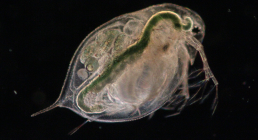
While avian influenza viruses are notoriously diverse, human adapted influenza is quite similar from place to place, evolving only relatively slowly and with strain replacement…

The methodology of ecological niche modeling has long been a topic of interest in the lab. A particular challenge has been the development of methods that…

Malaria is prominent among the vector-borne infectious diseases widely anticipated to be affected by climate change. Roughly, the idea is that global and regional climate…

Many species of carp are invasive in North America, accumulating large biomass, damaging benthic habitat, and disrupting native food webs. By contrast, the Grass Carp…

Early warning signals for critical transitions have now been described from a number of ecological and geophysical systems. Most of these signals reflect a dynamical…

What is the shape of the probability distribution of population extinction times? We followed the dynamics of more than a thousand experimental populations of Daphnia…

Genetic diversity is an obvious determinant of reassortment in influenza viruses. But how is that diversity measured? How does the rate of reassortment depend on…

In January, John visited Grambling State University, Philander-Smith College, and the University of Arkansas Little Rock to lecture on White-nose Syndrome, meet with students and…

Rift Valley fever is a viral disease of animals and humans and a global public health concern due to its ecological plasticity, ability to adapt,…

This year is the 20th anniversary of the Programme on Epidemic Models held at the Isaac Newton Institute for Mathematical Sciences in Cambridge, UK. In…





